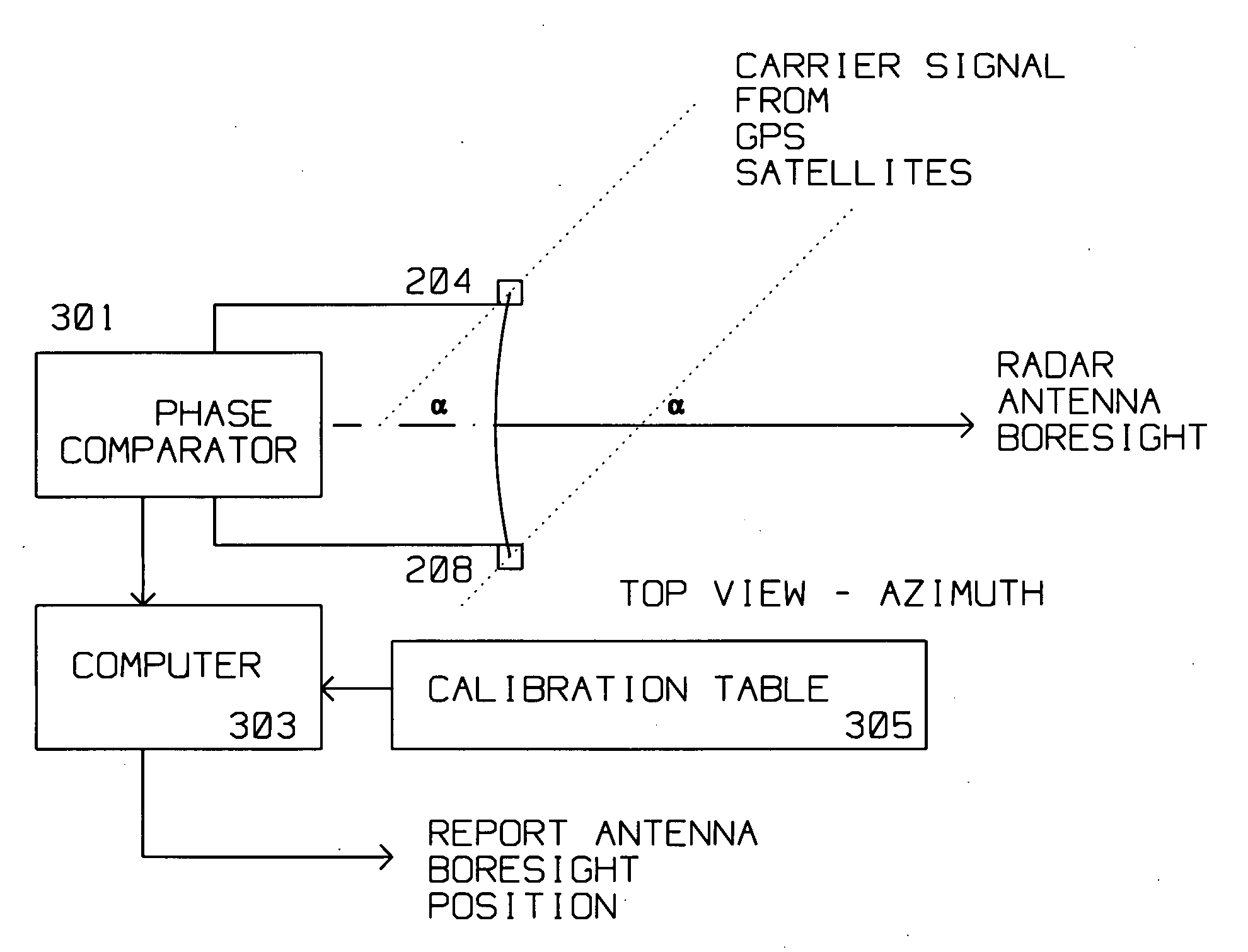Technique for accurate estimate of large antenna inertial two dimensional orientation using relative GPS spatial phase
a technology of spatial phase and antenna position, applied in the direction of antennas, instruments, measurement devices, etc., can solve the problems of insufficient accuracy of the angle dependent on mechanical gears having backlash, insufficient to determine the orientation of the antenna in typical radar applications, and insufficient position accuracy to be used for antenna orientation purposes
- Summary
- Abstract
- Description
- Claims
- Application Information
AI Technical Summary
Problems solved by technology
Method used
Image
Examples
Embodiment Construction
[0017] The present disclosure describes a method and apparatus for collecting antenna position measurements using phase measurements from a plurality of GPS sensors mechanically connected to structurally stiff locations on a large radar antenna, and combining the plurality of target motion measurements to improve overall antenna orientation accuracy as compared to previous approaches.
[0018]FIG. 1 shows an antenna 101 of the prior art where the azimuth orientation of the antenna is measured by a rotating angle transducer 103 capable of reporting the antenna azimuth angle position. From geometric considerations, if the uncertainty, or error of the reported azimuth angle from transducer 103 is θ, then the azimuth error at range R is:
Azimuth Error=R sin θ
[0019] For example, for R=50 nautical miles (nm), and θ=10 milliradians, (about ½ degree) the resulting azimuth error is approximately:
50 nm·6076.1 ft / nm·0.01 radians =3038 ft
[0020] Thus, mechanical angle transducers having an accuracy...
PUM
 Login to View More
Login to View More Abstract
Description
Claims
Application Information
 Login to View More
Login to View More - R&D
- Intellectual Property
- Life Sciences
- Materials
- Tech Scout
- Unparalleled Data Quality
- Higher Quality Content
- 60% Fewer Hallucinations
Browse by: Latest US Patents, China's latest patents, Technical Efficacy Thesaurus, Application Domain, Technology Topic, Popular Technical Reports.
© 2025 PatSnap. All rights reserved.Legal|Privacy policy|Modern Slavery Act Transparency Statement|Sitemap|About US| Contact US: help@patsnap.com



